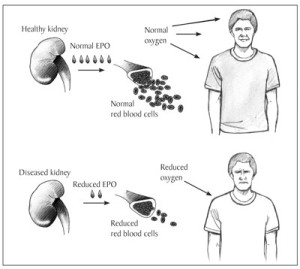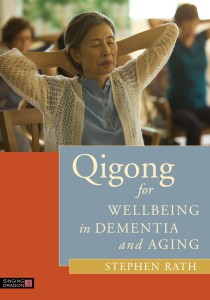By Stephen Rath with Marcia Rath, certified Qigong instructors and writers of Qigong for Wellbeing in Dementia and Aging
The author Frank Herbert observed in Dune that when we ponder choices in the future we see doors, perhaps many; but when we peer into the past we see a long corridor. And so it seems with the journey that my wife, Marcia, and I took as we traveled through the corridor that led to the publication of Qigong for Wellbeing in Dementia and Aging.
We began our journey when Marcia and I met in 1995 as she searched for authors for a yearly reading conference, and she loved the dad-daughter writing she found in my bio. She was working as a principal in Maine, while I was working my way up the ladder of freelance writing in Colorado with newspaper articles, short stories, and an embryonic novel. We started our life-changing foray into Qigong in 1997 when we bought a Terry Dunn video that introduced us to the Tai Chi long form. Soon, we were taking courses from instructors in Denver, which led me, in 1999, to the studio of a young and gifted Tai Chi Master from Beijing, Zhu Xilin. I have continued my studies with him to this day, and it is through his patient teaching that he guided me through the energetic door of the Small Heavenly Circle, or Microcosmic Orbit. Meanwhile, Marcia studied with Maedee Dupres, and she became certified as a Dragon’s Way instructor of Wu Ming Qigong through Master Nan Lu of the TCM World Foundation.
We entered the next door in 2012 when we became certified in Qigong practices from a Grandmaster of Qigong in Hawaii. During that time, Marcia and I shared our families’ history of dementia with the Grandmaster. My mother had passed away in 2009, and Marcia’s mother was in the middle stages of a worrisome decline. We were surprised when he called us a few weeks after we had returned to Colorado and bade us return to Hawaii. He had an intriguing offer.
Once there, he pointed a finger at Marcia and said, “You do program!” Then he pointed at me and decreed, “You write book!” The fruit of those commands was that Marcia immediately began teaching exercises from the Grandmaster’s foundation (NHRF) to residents at Memory Care facilities in Denver. It didn’t take long before Marcia observed that this simple program was helping the residents’ quality of life. I wrote fledgling chapters for a book that would help people who were experiencing dementia, as well as providing tools for rejuvenation to overburdened caregivers. I submitted my book proposal to Jessica Kinsley Publishers and received a welcoming response from Jessica Kingsley herself; encouraged that the book bridged two strong areas of JKP’s publishing—dementia and Qigong—she wrote that JKP was hoping to find a book on this topic and said, “It is so nice to find one ‘simply’ arriving.” And so Qigong for Wellbeing in Dementia and Aging was born.
According to Traditional Chinese Medicine (TCM), the symptoms of decline show up not just in the brain but also in the organs that promote brain functioning and memory, such as the kidney, spleen, and liver. It is no coincidence, then, that memory problems begin in some people who experience nocturnal enuresis (kidney), digestive problems (liver), or worry and confusion (spleen), to name a few. Changes in mood or behavior, such as anxiety, aggression, and depression, are also significant markers for the onset of dementia.
The Grandmaster described the kidney as the number one organ responsible for cognitive decline, because a blockage of vital energy in that organ reduces the amount of oxygen that can nourish the brain. This is affirmed by Western research, which characterizes the process in similar terms:

Healthy kidneys produce a hormone called erythropoietin, or EPO, which stimulates the bone marrow to make red blood cells needed to carry oxygen throughout the body. Diseased kidneys don’t make enough EPO, and bone marrow then makes fewer blood cells (NKUDIC p. 1)
In Part I of Qigong for Wellbeing in Dementia and Aging, we describe dementia from the perspective of both Western medicine and Traditional Chinese Medicine (TCM), with an overview of the functional interdependence of the organs and the manner in which disharmony in one organ can affect the others. We also explore everyday habits that may contribute to dementia, including the effect that poor posture has on restricting blood flow and oxygen to the brain.

Throughout the book, we chronicle the stories of people with Alzheimer’s type memory loss, including one remarkable 91 year-old woman, Beverly, whose health, memory and behavior deteriorated after cancer; but with the loving help of her family, she experienced the rejuvenating power of natural healing. Her story illustrates both the challenges and rewards that natural healing can bring.
From our own experience with our mothers and people in memory care facilities, we address some of the common behavioral issues associated with memory loss, such as sundown syndrome, wandering, agitation or other afflictive emotions. Our book pays particular attention to the needs of family members and caregivers who may be experiencing the harmful effects of burnout; and, we include powerful tools to help caregivers relieve stress and restore their own vital energy.
Part II introduces therapies to enhance cognitive abilities through healing sounds, sitting exercises, and hand and feet movements. All of these practices are highly effective; and, since a quarter of the brain’s cerebral cortex is dedicated to the hands, research has shown that hand exercises alone can improve the cognitive abilities of those who suffer from illnesses such as stroke, Parkinson’s disease, and dementia. Or, as Marcia likes to say, “Hands light up the brain.”

Part III provides a list of specific foods, recipes, and herbs that demonstrably encourage natural healing throughout the body. Believe it or not, the cauliflower recipe is quite yummy, as is the hearty goji berry tea.
There were more than a few contributors to the book, and the task of coordinating our efforts sometimes resembled the cliché of herding cats. We owe a debt of gratitude to the wonderful ladies at Jessica Kingsley Publishers—Rachel Menzies, Sarah Hamlin, Kate Mason, and Katelynn Bartleson—who shepherded all of us with kindness and respect through the process of getting our book into print. Thank you so much.
“As the average human life span has steadily increased since the last century, dementia has become a major challenge to the wellbeing of the aging population. How to prevent, treat and improve dementia is a task our society faces. To solve this task, a combined effort is needed from different philosophies and medical fields—a place where the East meets the West. Stephen Rath has studied with Grandmaster for many years, and verified numerous successes of Grandmaster’s Qigong exercises in helping people with dementia. This book provides clear and concise information about Traditional Chinese Medicine (TCM) and Western Medicine in order to help readers understand Qigong’s benefit for this illness. The format of the exercises are easy to understand and practice. I hope this book will bring new light in fighting dementia and improving the quality of life for our elders.”
—Dr. Shi Cheng, MM (China), Dipl. Ac., Vice President and Co-Founder of Colorado School of Traditional Chinese Medicine (CSTCM), Denver, CO
